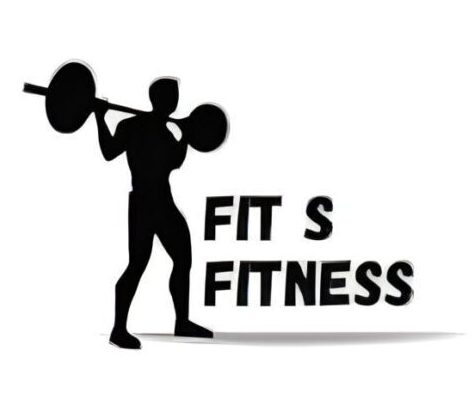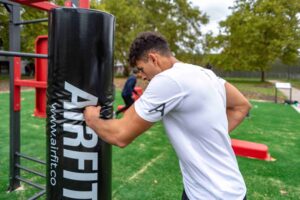Introduction
Welcome to the 30-Day Cardiovascular Health Challenge! In this challenge, we will embark on a journey to improve our cardiovascular health, strengthen our hearts, and boost our overall fitness. By committing to this challenge, you are taking a proactive step towards a healthier lifestyle and reducing the risk of cardiovascular diseases. So let’s lace up our shoes, get our hearts pumping, and start the challenge!
Why Cardiovascular Health Matters
Before we dive into the challenge, it’s essential to understand why cardiovascular health is crucial. The cardiovascular system, which includes the heart and blood vessels, plays a vital role in delivering oxygen and nutrients to our body’s organs and tissues. Maintaining a healthy cardiovascular system reduces the risk of heart disease, stroke, and other cardiovascular conditions. Regular exercise, particularly cardiovascular workouts, helps improve heart health, lower blood pressure, and increase overall fitness levels.
Getting Started: Assessing Your Current Fitness Level
To begin the challenge, it’s essential to assess your current fitness level. This will help you tailor the workouts to your individual needs and abilities. Start by measuring your resting heart rate, which is the number of times your heart beats per minute when you’re at rest. You can do this by placing two fingers on your wrist or neck and counting the beats for 60 seconds. Additionally, assess your stamina and endurance by performing a simple cardio exercise, such as brisk walking or jogging, for a set time or distance. This will give you a baseline to track your progress throughout the challenge.

Setting SMART Goals for the Challenge
To make the most of the 30-Day Cardiovascular Health Challenge, it’s important to set SMART goals. SMART is an acronym that represents the following five elements: specific, measurable, achievable, relevant, and time-bound. Setting SMART goals helps you stay focused, motivated, and accountable throughout the challenge. For example, your goal could be to increase your daily step count to 10,000 steps, reduce your resting heart rate by 5 beats per minute, or complete a 5K run within a specific time frame. Remember to make your goals challenging yet attainable to push yourself while still maintaining a sense of achievement.
Week 1: Building Endurance with Low-Impact Cardio
During the first week of the challenge, we will focus on building endurance with low-impact cardio exercises. Low-impact exercises are gentle on the joints, making them suitable for beginners or individuals with joint issues. Some examples of low-impact cardio workouts include brisk walking, swimming, cycling, or using an elliptical machine. Aim for at least 30 minutes of low-impact cardio exercise most days of the week. Gradually increase the duration and intensity of your workouts throughout the week to challenge your cardiovascular system.
Week 2: Intensifying Your Workouts with High-Intensity Interval Training (HIIT)
In the second week, we will intensify our workouts with high-intensity interval training (HIIT). HIIT includes switching between brief bursts of high-intensity exercise and active recovery periods. This form of cardio training can significantly improve cardiovascular fitness, burn calories, and boost metabolism. Incorporate exercises like burpees, mountain climbers, jumping jacks, or sprint intervals into your HIIT workouts. Begin with a work-to-rest ratio of 1:1; for example, perform intense exercise for 30 seconds and then rest for 30 seconds. Gradually increase the intensity and duration of your HIIT sessions throughout the week.
Week 3: Incorporating Strength Training for Cardiovascular Health
In the third week, we will incorporate strength-training exercises into our cardiovascular workouts. Strength training not only builds muscle but also provides cardiovascular benefits. It helps improve heart health, increases metabolism, and enhances overall fitness. Include exercises like squats, lunges, push-ups, and dumbbell rows in your workouts. Aim for two to three strength training sessions per week, alternating between upper and lower body exercises. Perform each exercise 10-15 times and do two to three sets. Remember to use proper form and gradually increase the weight as your strength improves.
Week 4: Adding Variety and Fun to Your Cardiovascular Workouts
As we enter the final week of the challenge, it’s time to add variety and fun to our cardiovascular workouts. Trying new exercises and activities not only keeps things interesting but also challenges different muscle groups and cardiovascular systems. Consider activities like dance classes, kickboxing, hiking, or playing a sport you enjoy. Experiment with different cardio machines at the gym or explore outdoor activities in your area. The key is to find activities that you genuinely enjoy, making it easier to stick to your cardiovascular fitness routine in the long run.

Tips for Maintaining Cardiovascular Health Beyond the Challenge
As the 30-Day Cardiovascular Health Challenge comes to an end, it’s important to maintain the progress you’ve made. Here are some tips for maintaining cardiovascular health beyond the challenge:
- Make exercise a regular part of your daily routine.
- Aim to engage in at least 150 minutes of cardio exercise at a moderate intensity, or 75 minutes of cardio exercise at a vigorous intensity, every week.
- Mix up your workouts to challenge your cardiovascular system and prevent boredom.
- Prioritize heart-healthy foods in your diet, such as fruits, vegetables, whole grains, lean proteins, and healthy fats.
- Avoid smoking and limit alcohol consumption to maintain cardiovascular health.
- Get enough sleep to support overall health and recovery.
Remember, maintaining cardiovascular health is a lifelong journey, and consistency is key.
Conclusion
Congratulations on completing the 30-Day Cardiovascular Health Challenge! By committing to this challenge and incorporating regular cardiovascular workouts into your life, you have taken a significant step towards improving your heart health and overall fitness. Remember to continue challenging yourself, setting new goals, and making cardiovascular exercise a regular part of your routine. Your heart will thank you for it.




